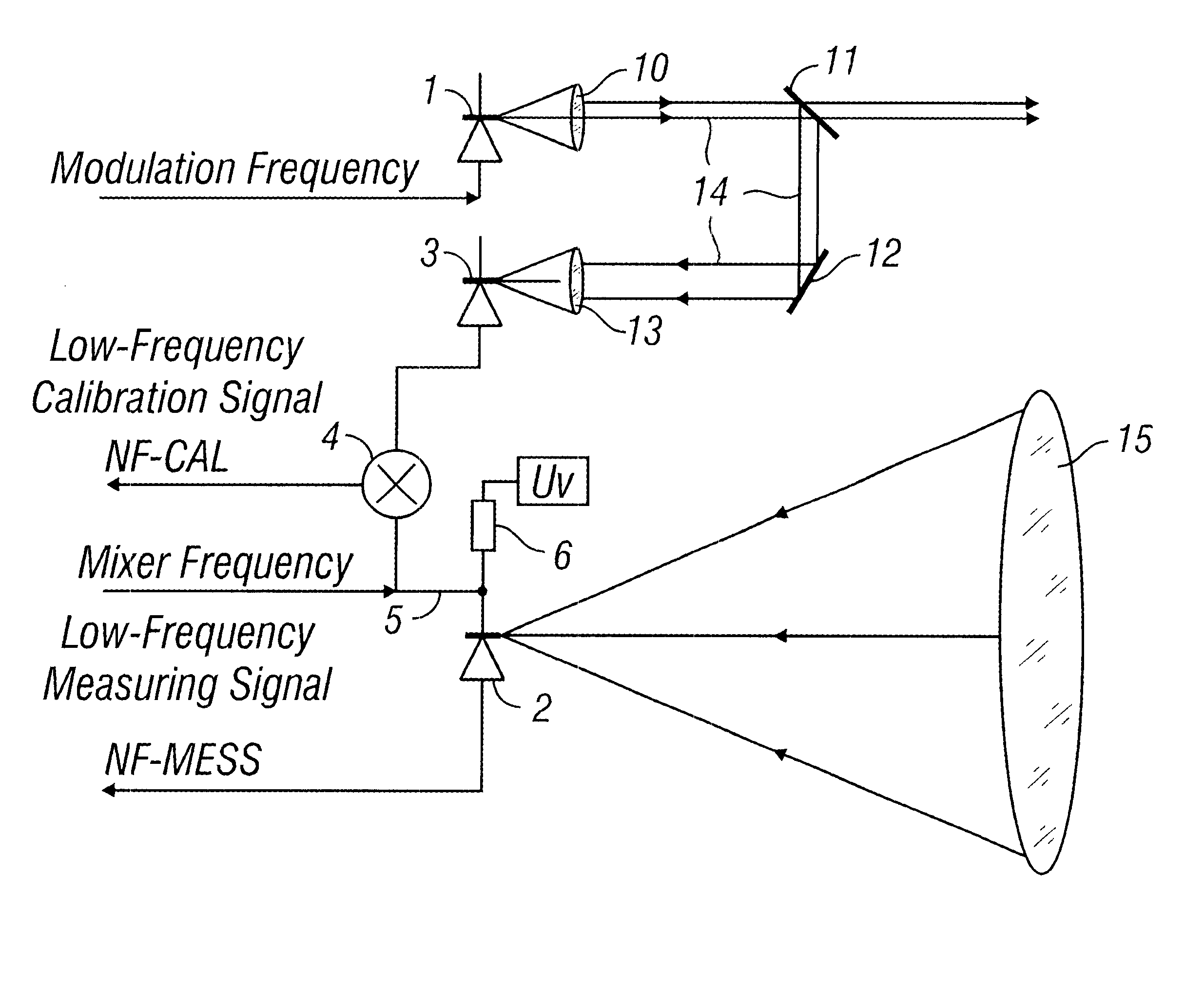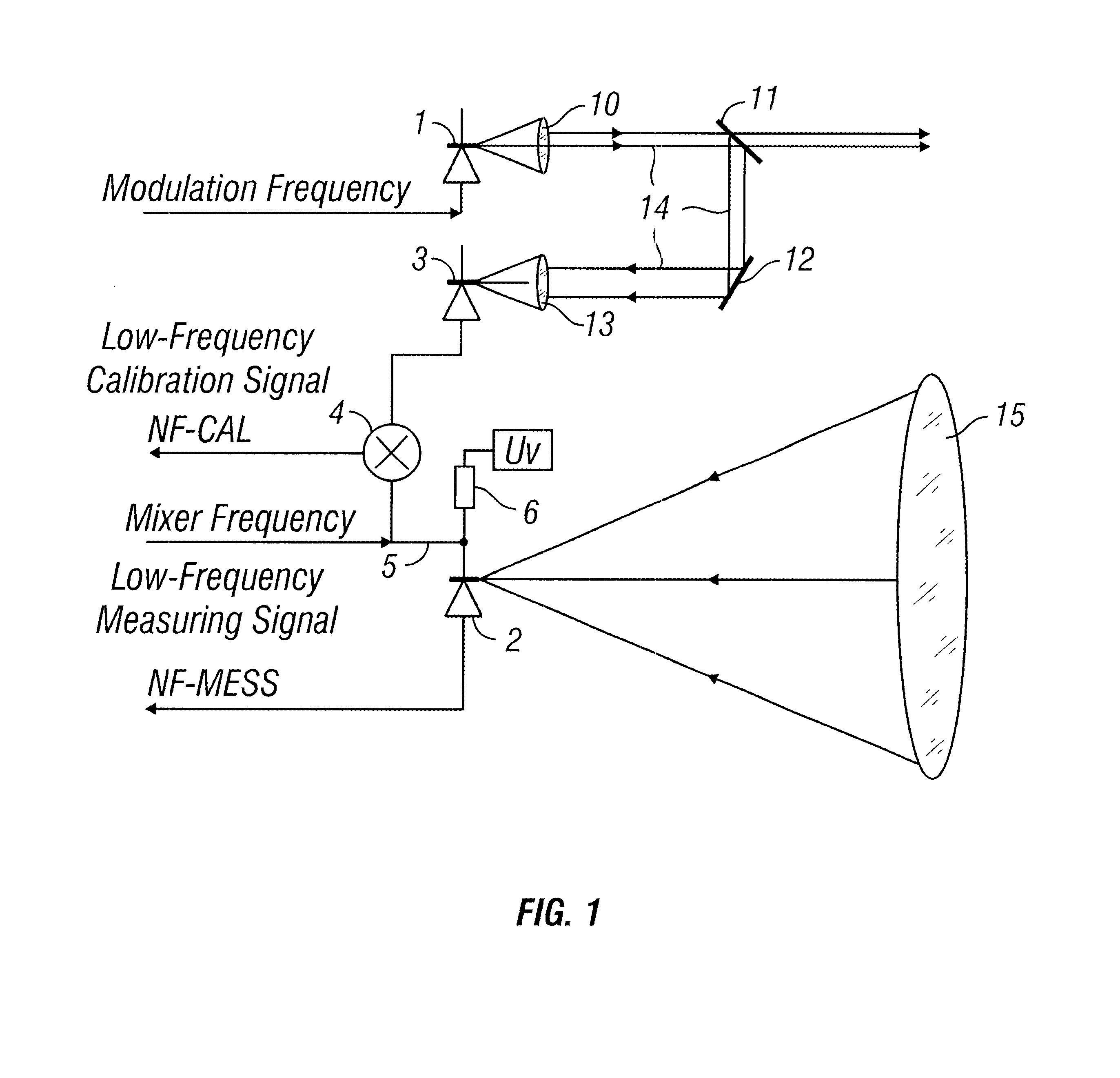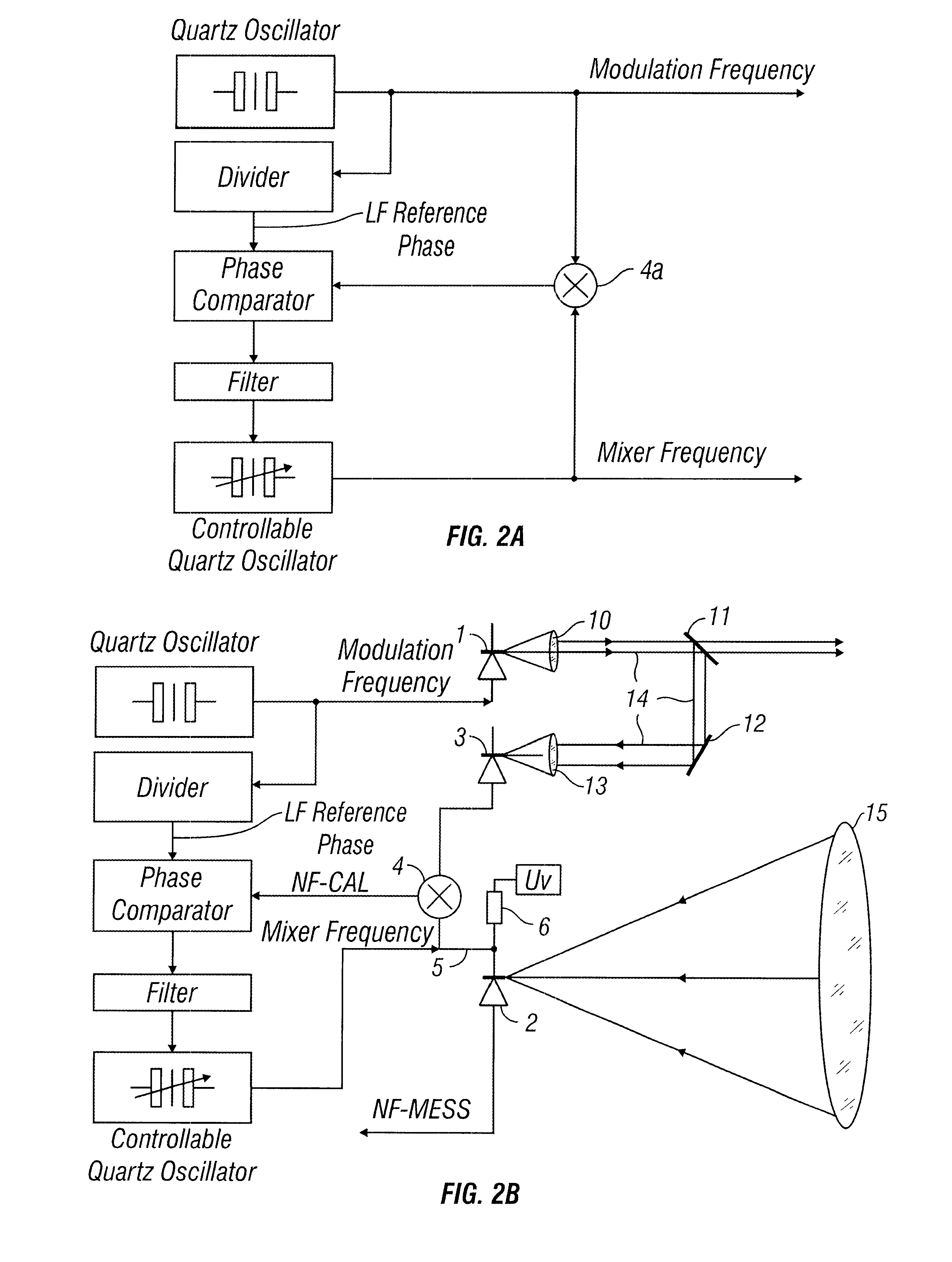Device for calibrating distance-measuring apparatus
a technology for measuring apparatuses and devices, applied in distance measurement, instruments, and using reradiation, etc., can solve problems such as phase shift of signals, delay of signal generation, errors in distance measurement, and delay of all electronic components and lines
- Summary
- Abstract
- Description
- Claims
- Application Information
AI Technical Summary
Benefits of technology
Problems solved by technology
Method used
Image
Examples
Embodiment Construction
FIG. 1 schematically shows a distance-measuring apparatus according to the invention. The optical beam emitted by the transmitter 1 and collimated by an optical collimation means 10 is divided by a beam divider 11 into a measuring beam and into a reference beam. The measuring beam reaches an object which is to be measured and whose distance is to be determined. The beam reflected or scattered by the object to be measured is guided in the usual way via a receiving lens system 15 to a measuring receiver 2.
After covering a reference distance 14 which leads via the beam divider 11, a deflection mirror 12 and a lens system 13, the reference beam is received by a reference receiver 3. The reference distance 14 is the optical calibration distance of the distance-measuring apparatus. Depending on the space available in the apparatus, the reference distance 14 can of course be otherwise designed and, for example, the reference receiver 3 can be positioned directly after the beam divider 11. ...
PUM
 Login to View More
Login to View More Abstract
Description
Claims
Application Information
 Login to View More
Login to View More - R&D
- Intellectual Property
- Life Sciences
- Materials
- Tech Scout
- Unparalleled Data Quality
- Higher Quality Content
- 60% Fewer Hallucinations
Browse by: Latest US Patents, China's latest patents, Technical Efficacy Thesaurus, Application Domain, Technology Topic, Popular Technical Reports.
© 2025 PatSnap. All rights reserved.Legal|Privacy policy|Modern Slavery Act Transparency Statement|Sitemap|About US| Contact US: help@patsnap.com



